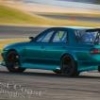Mitsubishi Badge On My 1993 R32 Rb20det? Is This Normal?
Announcements
-
Similar Content
-
Latest Posts
-
That's crazy helpful! i'll be ordering both the poly bushings and the weld in kit. In Belgium the technical inspection can be ever more difficult than TUV, but with oldtimers (30+years old) they allow more so it should be ok I think, i'll check with some friends who work there. regarding the FUCA, RUCA & tension rods, i've been learning alot about all the suspension components for my driftcar, but I should probably invest some time in how they should be set up for a grip car instead of the opposite. 😛
-
didn't need the passcode. just needed to put it on a USB. It did the reset but still goes to a black screen after booting up.... this is the file i used if anyone needed to reset there Mark 7 AUCAR T Style for Q50 Q60 back to factory settings https://u.pcloud.link/publink/show?code=XZKbcQ5ZVKVdSGRFSD7wcTLoYyFE0ydGXBX0
-
By Dose Pipe Sutututu · Posted
You work fast and efficient, all that would have taken me at least 2.5 years LOL -
252mm to the centerline of the bottom mount. BTW the front springs were originally 8kg.
-
Yes, well.... get the main wire off the back of the alternator and try again?
-







Recommended Posts
Create an account or sign in to comment
You need to be a member in order to leave a comment
Create an account
Sign up for a new account in our community. It's easy!
Register a new accountSign in
Already have an account? Sign in here.
Sign In Now